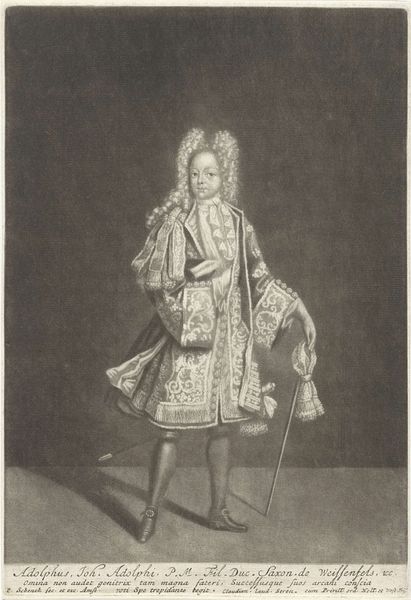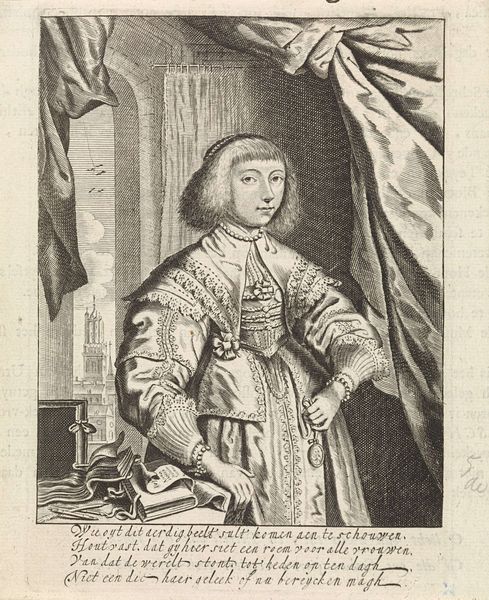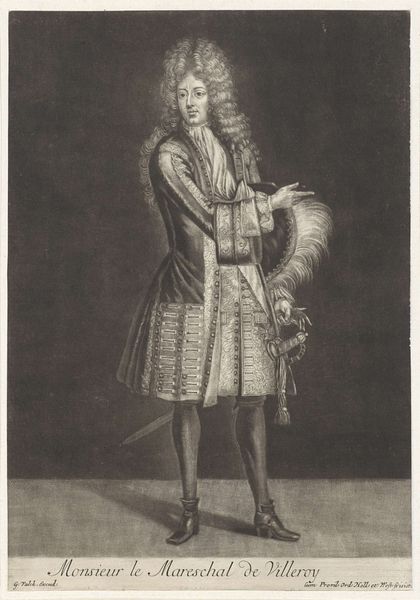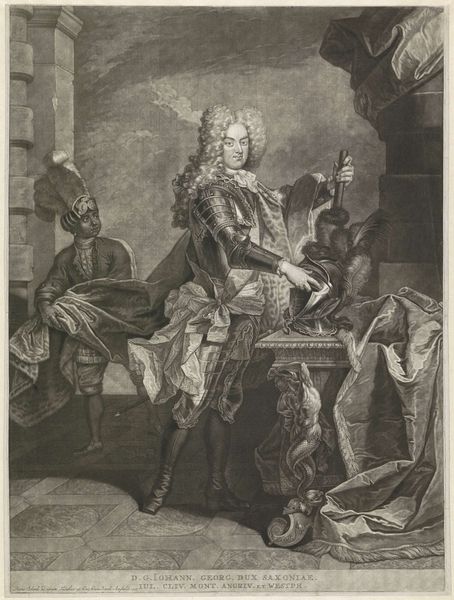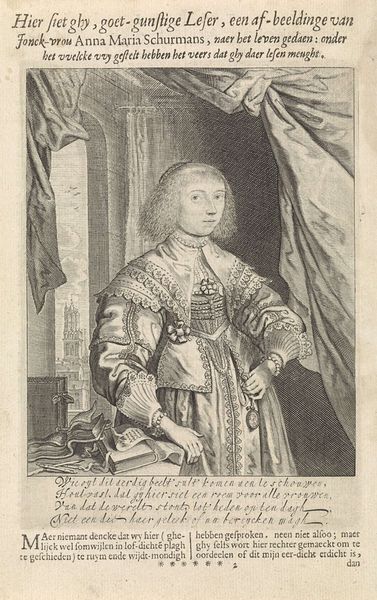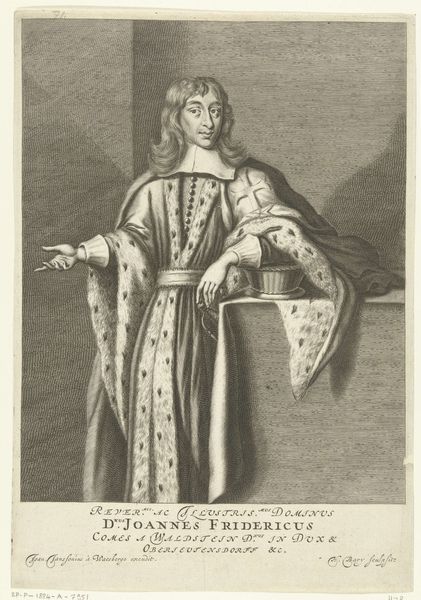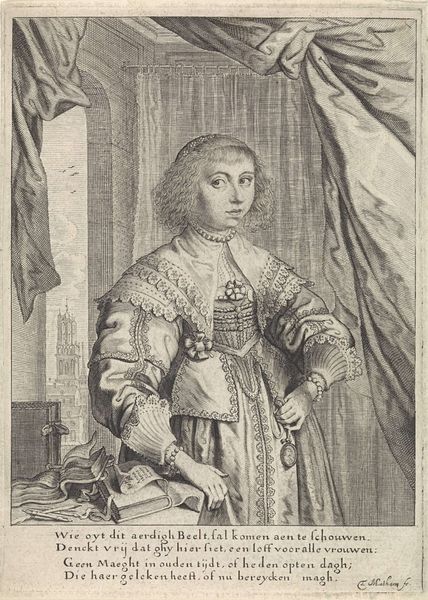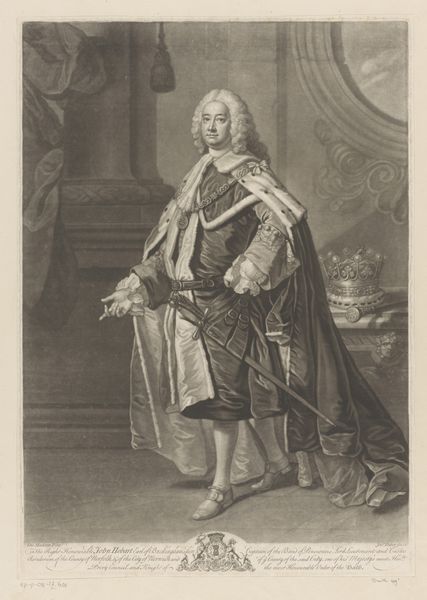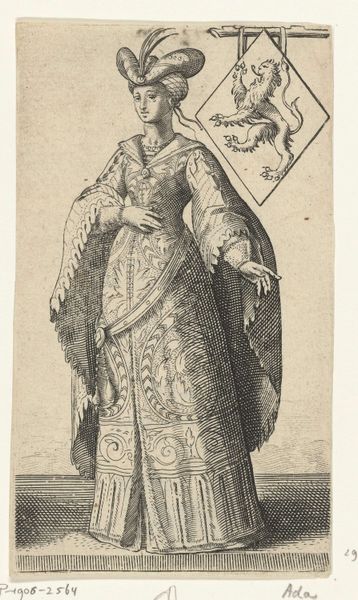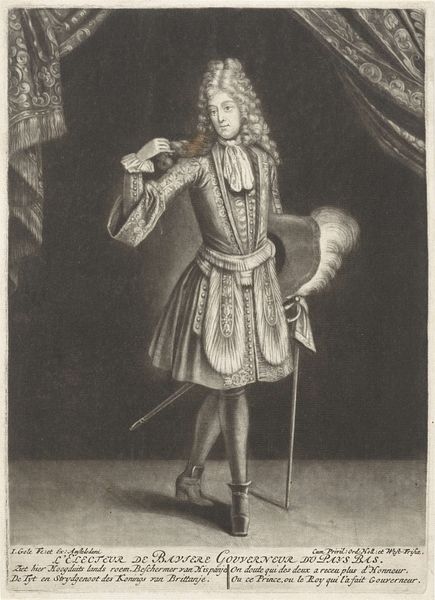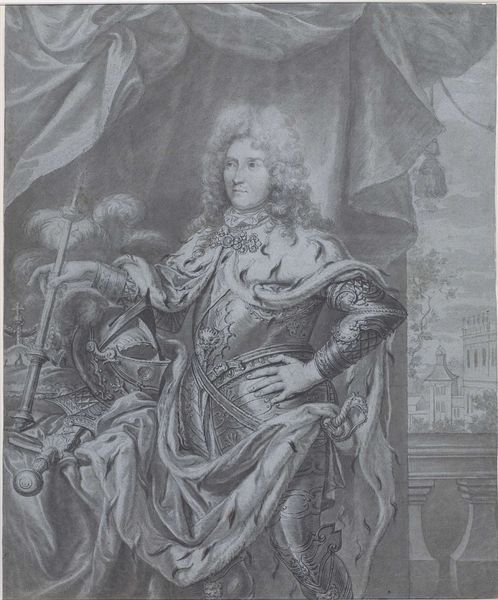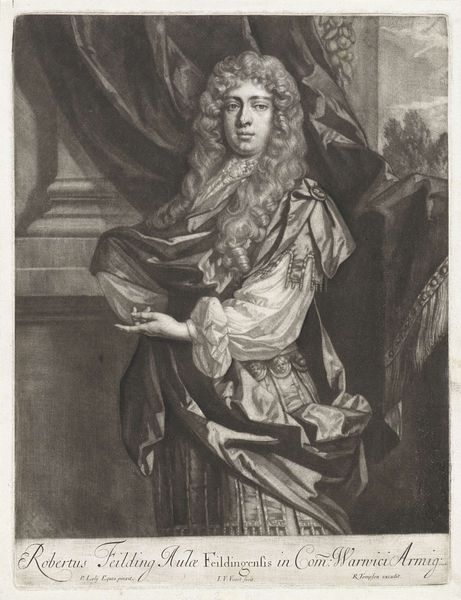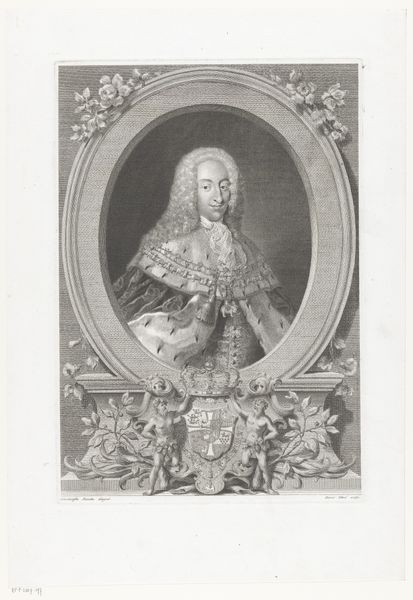
Portret van Peter Feodorowitz, groothertog van Rusland 1736 - 1775
0:00
0:00
print, engraving
#
portrait
#
baroque
# print
#
history-painting
#
engraving
Dimensions: height 214 mm, width 170 mm
Copyright: Rijks Museum: Open Domain
Curator: Here we have a print titled "Portret van Peter Feodorowitz, groothertog van Rusland," or "Portrait of Peter Feodorowitz, Grand Duke of Russia," created between 1736 and 1775. Jan Caspar Philips is credited as the engraver. Editor: It strikes me as both stately and faintly melancholic, even with all the finery. The stark monochrome and almost photographic detail certainly add to that effect. Curator: Baroque portraits certainly loved to utilize dense symbolism, and this one is no exception. The column speaks to the power and endurance of his reign, though, of course, history would show that to be far from true, and his sash might refer to a particular honorary order, maybe religious or militaristic, something tied to social importance, anyway. Editor: Right, all these markers of status were carefully created using very material, terrestrial, practical things, after all: ink, paper, engraved metal... The level of precision and detail achieved through engraving, think about the artisan's painstaking labour that goes into achieving such fidelity of reproduction, churning out imagery on this scale really changed the game. It certainly shifted perceptions of power when disseminated, to all social strata! Curator: That proliferation is key! It would disseminate a pre-packaged persona of authority but the very process of dissemination opens it up for debate and, inevitably, dissent! These symbols could act as psychological anchors or even triggers to a whole collective of people who saw in Peter an answer or harbinger for something, good or bad. Editor: Very true. Considering this piece is found in the Rijksmuseum, I suppose we can see the endurance and, even, canonisation of mass-reproduced images, can’t we? What was once produced to assert status has become a testament to shifting perceptions and production technologies. Curator: I suppose the very existence of that image shows the ambivalent but tenacious hold symbolism and memory retain. Editor: Well, to that end, seeing these historical objects helps to contextualize material processes in a much broader social dialogue that's both past and ongoing, and to allow that discourse to become inclusive and widespread in and of itself.
Comments
No comments
Be the first to comment and join the conversation on the ultimate creative platform.
